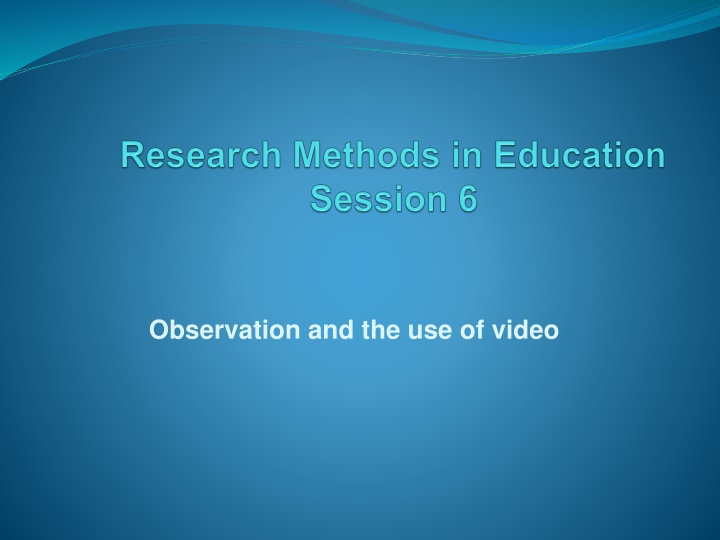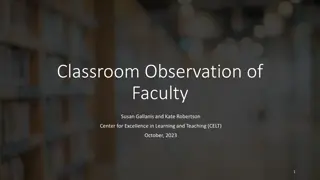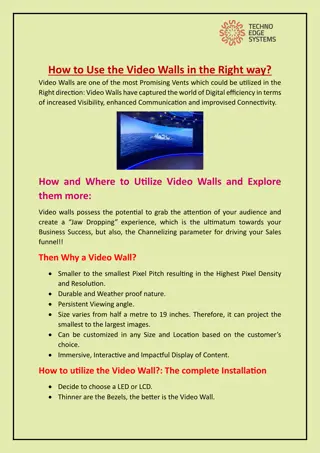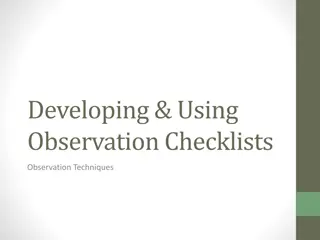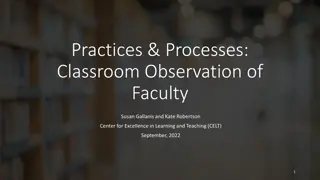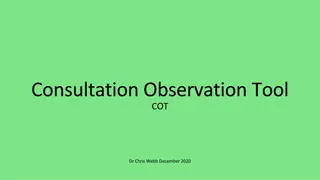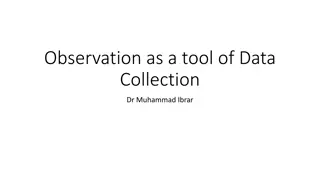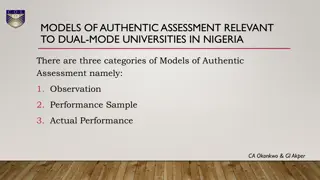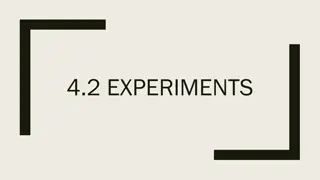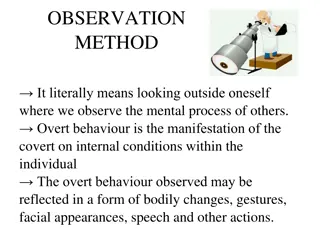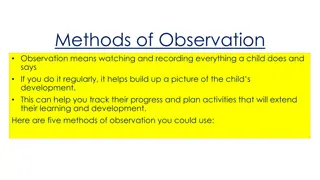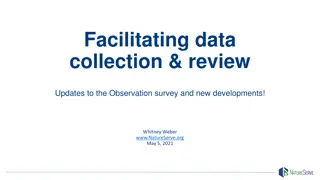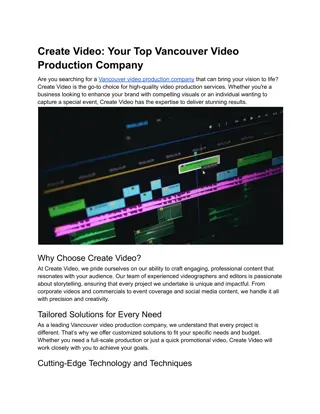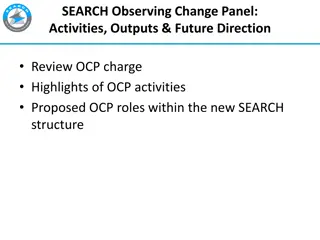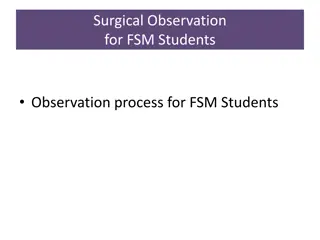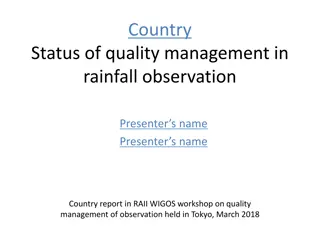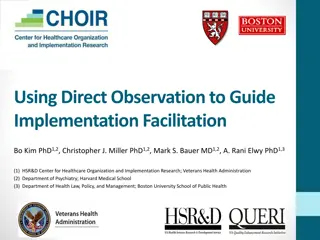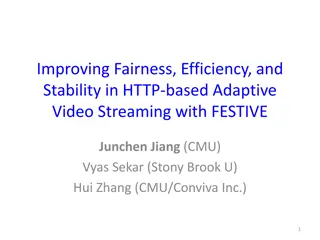Observation and Video Use in Lessons
In research, observation plays a crucial role, with two main types being participant and non-participant observation. The characteristics of these observations involve direct observation by the researcher in natural settings, influenced by factors like familiarity, expectations, relationships, and empathy. Various questions and issues arise during observation, such as who will be observed, when and what to record. The need for selectivity is emphasized due to the impossibility of observing everything. Potential focus areas include pupils, teachers, classroom dynamics, and interactions.
Download Presentation

Please find below an Image/Link to download the presentation.
The content on the website is provided AS IS for your information and personal use only. It may not be sold, licensed, or shared on other websites without obtaining consent from the author.If you encounter any issues during the download, it is possible that the publisher has removed the file from their server.
You are allowed to download the files provided on this website for personal or commercial use, subject to the condition that they are used lawfully. All files are the property of their respective owners.
The content on the website is provided AS IS for your information and personal use only. It may not be sold, licensed, or shared on other websites without obtaining consent from the author.
E N D
Presentation Transcript
Observation There are two types of observation research: participant observation non-participant observation
They share the same characteristics rely on direct observation by the researcher take place in natural settings are complicated by issues of perception
Perceptions can be influenced by: Familiarity/knowledge Expectations and experiences Relationships Sensitivity/empathy
Some questions Who will be observed? When will the observations will take place? How often will the observations take place? What will be observed? What will be recorded?
Some issues for the observer Non-Participant Observer: Placing in room Eye contact Dress/personal style Method of recording observations Participant Observer: How do you record?
The need to be selective Impossible to observe let alone record everything. Therefore need to establish a basis for selection of elements of observation: Content/process Interaction between individuals Nature of language Specific types of questions/responses
What might you look at? - Pupils Physical setting Number of pupils Grouping of pupils Use of classroom territory Nature of transactions between pupils (if any) Nature of transactions between pupils and teacher Classroom conventions in behaviour (e.g. hand raising) Division of labour amongst pupils
What might you look at? Teachers Use of classroom territory Posture/tone/other personal characteristics Complexity of vocabulary Nature of questions Explicit/implicit structure for lesson Flexibility of teacher Resources provided/available
Informal (unsystematic) observation Perhaps better called non- formal observation i.e. no systematic framework for sampling/recording observations. Observer decides what to record from observations. Recording could be by written note or photographs. Videorecording can be considered a informal research method. Continuous (complete?) capture possible through use of video.
Systematic (formal) observation Does not attempt to capture everything. Pre-planned decisions about focus of observation. Often employ a system of categories related to observable activities. Usually observations made against a time interval baseline. Produces data that can be presented in quantitative forms, and that can be summarised and related to other data using statistical techniques.
Systematic (formal) observation Usually some form of coding sheet/observation inventory/schedule generated. Once the procedures for recording, and the observation categories, have been decided, the role of the observer is one of following the protocol such that all observers of the same event should record it in an identical fashion (inter-observer reliability). Video could be used with coding carried out at a later time. Software available to record video and allow coding.
An example FIAC Flanders Interaction Analysis Categories Teacher Talk: Response: 1. 2. 3. 4. Accepts feelings Praises/Encourages Accepts/uses pupil ideas Asks questions Initiation: 5. 6. 7. Lecturing Giving directions Criticising/justifying authority Pupil Talk: Response: Initiation: 8. 9. Pupil talk = response Pupil talk = initiation Silence: 10. Silence or confusion Coding about every three seconds (i.e. 20/25 codes per minute)
Some issues Maintaining consistency of observations particular with short interval recording Concentration Partial picture of complex realities Possibilities for use of technology to support observation (BOSS) to enhance validity and reliability.
Using video in educational research Supplement to live observation Replacement for live observation Self-evaluation Lesson study Action research Stimulated recall
Analysing video data Nvivo ELAN Anvil ATLAS.ti HyperResearch
